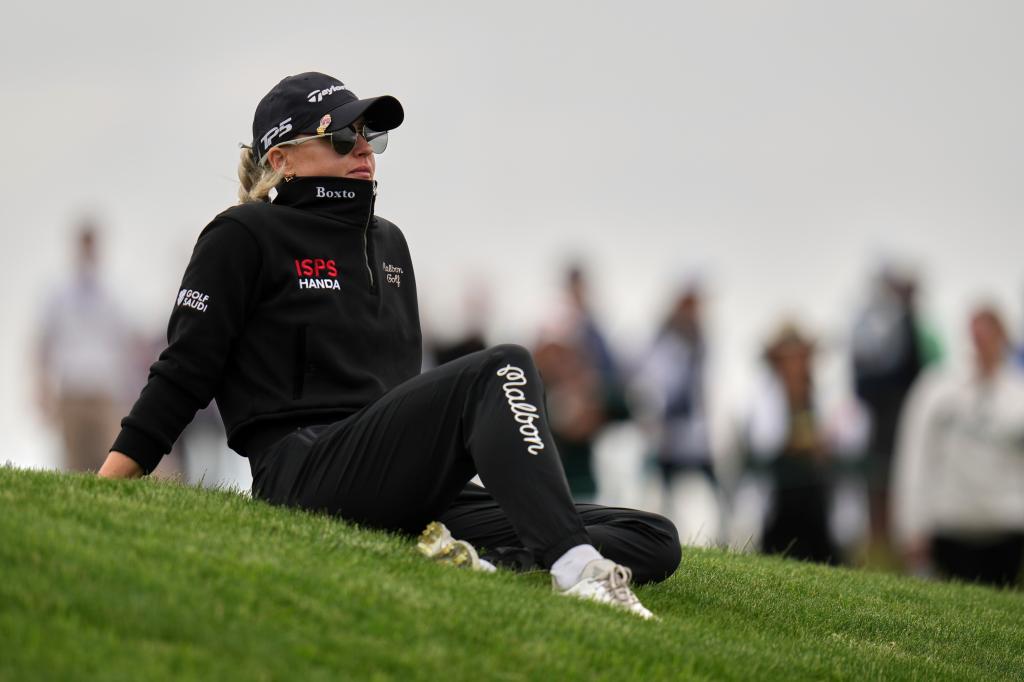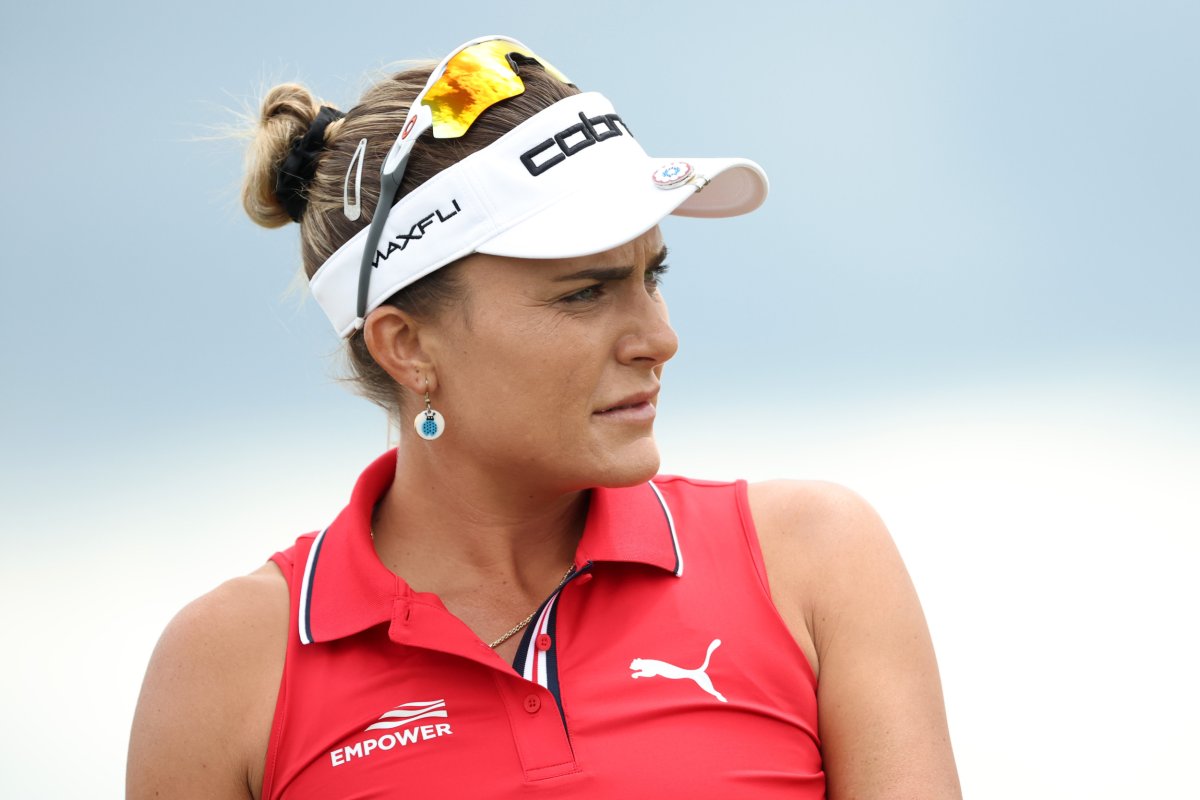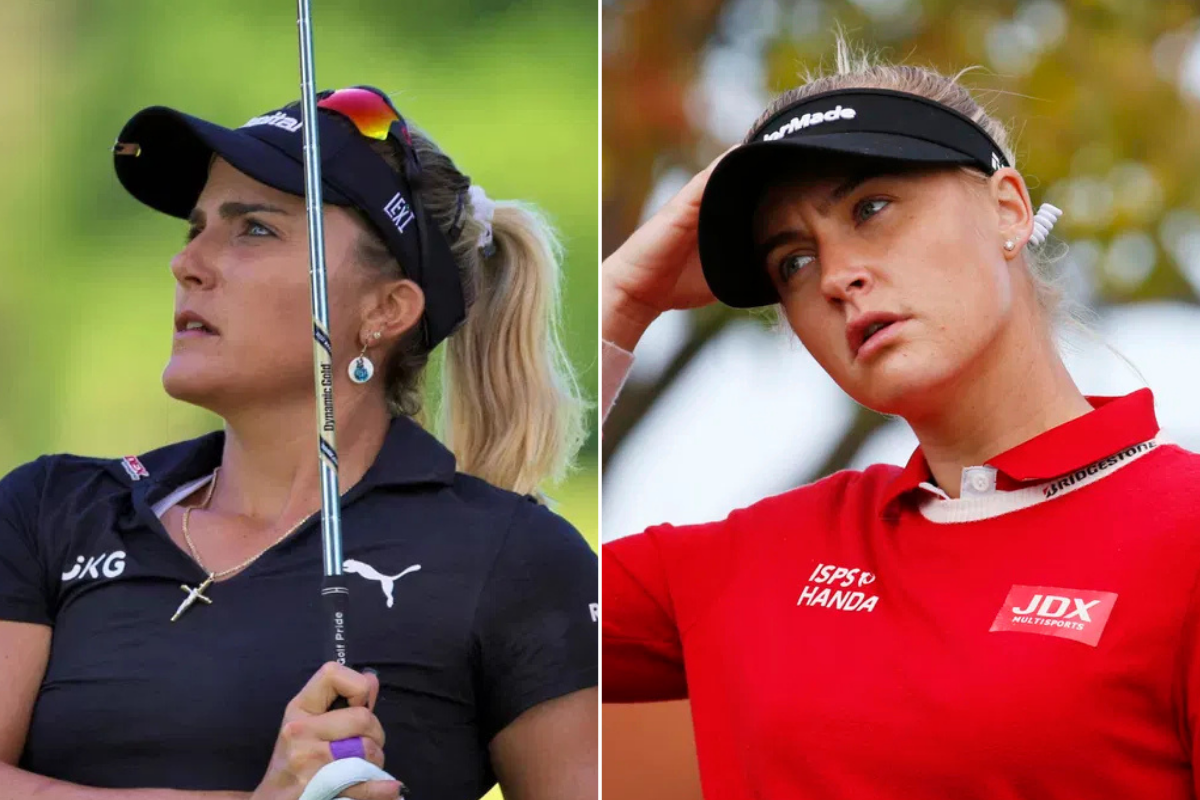Charley Hull did not appear happy with Lexi Thompson at the U.S. Women’s Open

The 2025 U.S. Women’s Open held at Erin Hills unfolded with unexpected drama, particularly in a highly-publicized pairing featuring Charley Hull, Lexi Thompson, and Nelly Korda. As the tournament progressed, onlookers observed a palpable tension between Hull and Thompson, especially regarding the pace of play. Hull finished the round at level par alongside Korda, while Thompson found herself one stroke behind, fueling the undercurrents of frustration among players and spectators alike.
Tension on the Course: A Slow Pace of Play
Throughout the first round, the slow pace of play became a point of contention, impacting the morale of those involved. Hull’s frustration was evident, particularly as she was spotted visibly agitated while waiting for Thompson to finish her five-foot putts. Onlookers could sense Hull’s annoyance, with her body language speaking volumes as she sat at the ninth tee, eagerly anticipating her turn, while Thompson was still wrapping up on the eighth hole. The differences in their playing speeds seemed to exacerbate an already tense situation, creating an uncomfortable atmosphere within their group.
As the round came to a close, Hull’s eagerness to finish and get back to the clubhouse was apparent. This impatience led to speculation about how the slow pace and Hull’s visible annoyance might influence her game in the subsequent rounds. In professional golf, maintaining mental composure is crucial, and the public’s eye was closely watching how this unfolding drama would affect both players moving forward.
Thompson’s Response to the Criticism
Following the conclusion of her first round and ultimately missing the cut, Thompson took to social media to address the mounting criticisms regarding her pace of play. In her post, she stood her ground against claims of slow play, asserting that her group had consistently waited for their turn on each hole. Thompson emphasized that they were not out of position and urged those critiquing her performance to consider the broader context of the game rather than focusing solely on momentary observations.
Additionally, Thompson addressed speculation about her future in the sport. By clarifying that she had never officially announced her retirement, she explained her decision to play a reduced schedule. She expressed the importance of participating in tournaments she holds a genuine interest in, reaffirming her commitment to the sport while also managing her personal priorities.
Implications for Player Dynamics in Professional Golf
This incident has ignited discussions around the crucial issue of pace of play in professional golf and how it can affect player relationships and performance on the course. Hull’s visible frustration and Thompson’s defensive stance highlight the complexities of interpersonal dynamics in a competitive environment, where every minute can impact performance, mood, and strategy. The reactions from both players reveal the importance of communication and understanding among athletes who share the high-stakes arena of professional golf.
The spotlight on the pace of play also raises larger questions about golf regulations and how they are enforced. With slow play often becoming a talking point in professional tournaments, it is evident that finding a balance between players’ individual styles and the tournament’s overall efficiency remains a significant challenge. Increased awareness and dialogue surrounding these issues could lead to more structured guidelines, potentially enhancing player experiences and spectator engagement alike.
As the tournament progressed, it became increasingly clear that Hull’s frustrations might carry over into her gameplay. Observers wondered whether Thompson’s concerns about public perception would also influence her approach in the following rounds. Both players found themselves at a crossroads where their responses would have ramifications beyond just individual scores, shaping the narrative of the tournament and how they were perceived within the golfing community.
In light of these developments during the U.S. Women’s Open, it’s clear that professional golf is not only about skill but also about emotional resilience and strategic mental engagement. Fans and analysts alike will be watching closely to see how both players navigate the remaining rounds, their performances intertwined with the storylines that emerged from the early rounds of competition.



